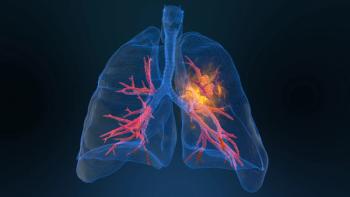
Certain Sleep Difficulties in Childhood Might Affect Mental Health
Certain sleep difficulties present in the transition from childhood to adolescence might be associated with psychopathology symptoms.
The severity of
Future interventions and treatments could focus on sleep profiles to improve sleep-related and mental health–related outcomes as children mature into adolescents.
This study was conducted because it wasn’t known whether the associations between sleep problems and psychopathology symptoms were specific to discrete profiles of sleep problems and specific internalizing and externalizing events.
The study authors were trying to characterize individual sleep problem profile changes and the possible associations with psychopathology symptoms across the evolution from childhood to adolescence.
“Sleep problems and psychopathology symptoms are highly comorbid and bidirectionally correlated across childhood and adolescence,” the authors noted, adding that the identification and treatment of sleep problems while patients are young is a vital preventive aim for mental health.
First, a total of 10,313 individuals (4913 [47.6%] female) were classified into 4 latent profiles of sleep problems at baseline and follow-up in an observational cohort study. Baseline data (age of participants was 9-11 years) and 2-year follow-up data (age of participants, 11-13 years) were obtained from the community-setting, multicenter Adolescent Brain Cognitive Development (ABCD) study. Data were obtained from September 2016 to January 2020, and data were evaluated from August 2021 to July 2022.
Then, sleep problems were evaluated at baseline and follow-up through the parent-reported Sleep Disturbance Scale for Children.
The 4 latent profiles of sleep problems consisted of a low disturbance profile, a sleep onset/maintenance problems profile, a moderate and nonspecific disturbance profile (termed mixed disturbance), and a high disturbance profile. Individuals wirg the 3 more serious problem profiles showed higher risk of concurrent internalizing symptoms (sleep onset/maintenance problems: odds ratio [OR], 1.30; 95% CI, 1.25-1.35; P < .001; mixed disturbance: OR, 1.29; 95% CI, 1.25-1.33; P < .001; high disturbance: OR, 1.44; 95% CI, 1.40-1.49; P < .001) and externalizing symptoms (sleep onset/maintenance problems: OR, 1.20; 95% CI, 1.16-1.23; P < .001); mixed disturbance: OR, 1.17; 95% CI, 1.14-1.20; P < .001); high disturbance: OR, 1.24; 95% CI, 1.21-1.28; P < .001).
Movements between sleep profiles over time were related to prospective internalizing and externalizing symptoms, but not vice versa.
The study authors did not observe an association between each of the identified sleep profiles and specific and isolated symptoms of psychopathology. Rather, the severity of sleep problems, rather than the specific sleep profile, appeared to be a more pertinent component in determining psychopathology risk. Future research in this area is needed.
“The 4 sleep profiles identified in this study demonstrate that developmental sleep problems are diverse, highly comorbid, and follow individualized trajectories across development,” said the study authors.
Also, the nature of the profiles implies that rather than depicting a continuum of severity, sleep problems late in childhood might instead depict heterogenous underlying constructs. Therefore, this could be an indication that differential symptom profiles might be treated better with specific and tailored interventions instead of broader interventions for all sleep problems.
Of note, the authors also wrote that problems might resolve through time alone, but that the high continuity of the sleep onset/maintenance problems pattern could indicate the chronic nature of difficulties in starting and maintaining sleep in some children. Further research on these topics is needed.
Additionally, they saw subtle patterns of specificity, especially in the strength of connections between internalizing relative to externalizing symptoms. The strongest associations were seen for somatic distress, with an approximate 60% increase in severity of symptoms between the low and high disturbance profiles.
They also described the limitations of racial and ethnic diversity needing further research, that children with serious neurodevelopmental disorders were excluded, and that analyses could be affected by the inclusion of children with neurodiverse conditions, like attention-deficit/hyperactivity disorder. They also state that future research should include various informants of child sleep and emotional and behavioral well-being, including both objective and subjective sleep behavior measurements.
"Follow-up of individuals in each of the sleep profiles will elucidate the developmental trajectory of different sleep problems into mid and late adolescence and their prospective association with later mental health outcomes,” the study authors concluded.
Reference
Cooper R, Di Biase MA, Bei B, Quach J, Cropley V. Associations of changes in sleep and emotional and behavioral problems from late childhood to early adolescence. JAMA Psychiatry. 2023;80(6):585–596. doi:10.1001/jamapsychiatry.2023.0379
Newsletter
Stay ahead of policy, cost, and value—subscribe to AJMC for expert insights at the intersection of clinical care and health economics.






























































